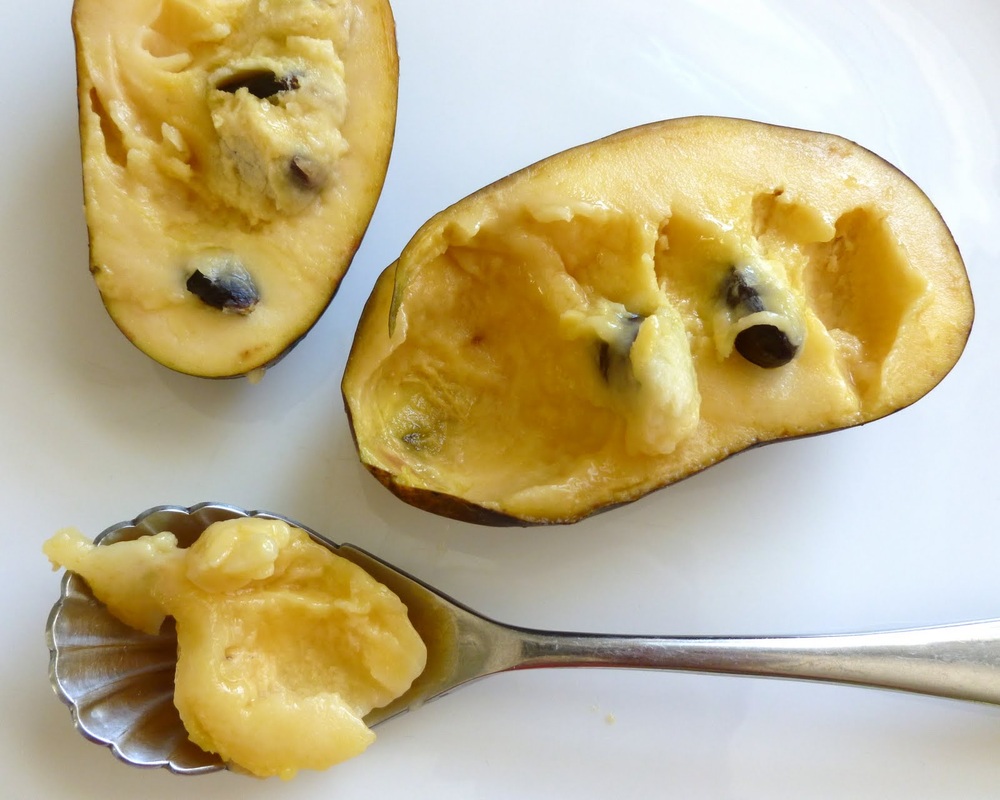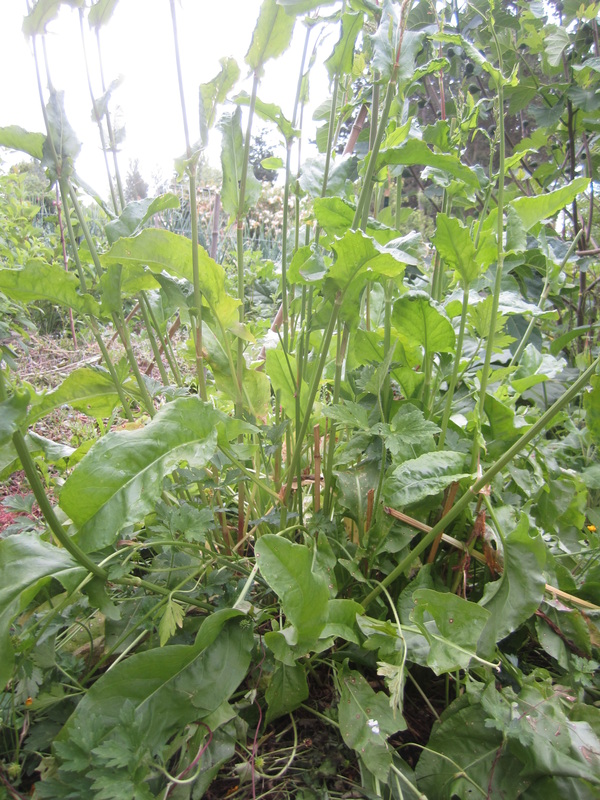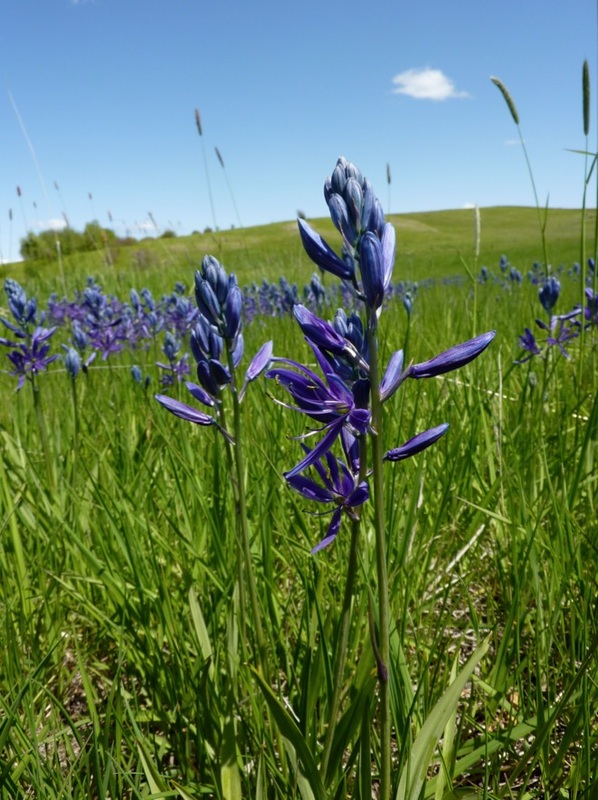| With almost all the plants in the ground and some bad weather, we spent a lot of the past week doing planning – mapping out new areas of the garden, trying to imagine them as we want them to look in 25 years, researching different species. The property already has a pretty great variety of all the main fruit trees you would expect in the northwest – apples, cherries, European and Asian pears, hazelnuts, walnuts – as well as a few that were more surprising to me: Chinese chestnut, fig, and even walnut. One plant that is much more obscure than it should be is pawpaw, the largest fruit native to the US. Native to more or less the whole east coast, the pawpaw’s fruit is supposed to be similar to soursop or cherimoya (I know that probably doesn’t clear things up too much). We are hoping to put two of them in to the south hugelculture. Another plant I’m wanting to try out in the food forest is camas, a bulb that grows wild in the Willamette Valley, where I’m from. Blue-flowering camas is edible, and was one of the staple foods of the Kalapuyas; white-flowering camas is poisonous, and the two plants can only be distinguished while in bloom. But if we make sure to get the right one, it would be fun to try to introduce native crops to the garden. | But one of the things we’ve been considering in planning is trying to bring in a greater diversity of crops, including a lot of permaculture favorites that are unfamiliar to most of us (Siberian pea shrub? Sea buckthorn?). After all, the number of crops used in conventional agriculture is tiny compared to the number of useful species that exist – I read recently that ethnobotanists have identified 5,000 species used by indigenous people in Mexico alone. Other plants are familiar, but have uses that I never knew about before. Examples include salal (an evergreen bush that grows wild all over the NW and that I’ve seen my whole life), which produces edible berries, and lambs quarter, a small green that’s apparently more nutritious than spinach. Not to mention nettles, dandelions, and those mushrooms growing down in the potato beds; a lot of time, expanding our range of useful species is more about educating ourselves than needing a trip to the nursery. |
|
2 Comments
Helen Gabel
6/24/2014 06:20:32 am
Oh, I have wanted to try camas for forever! A few bulbs at my old site never did very well, and I am so curious to try again. The flower is so lovely.....
Reply
Leave a Reply. |
AuthorGarden bloggers are community members, volunteers and interns at Songaia. Archives
July 2024
Categories |






 RSS Feed
RSS Feed